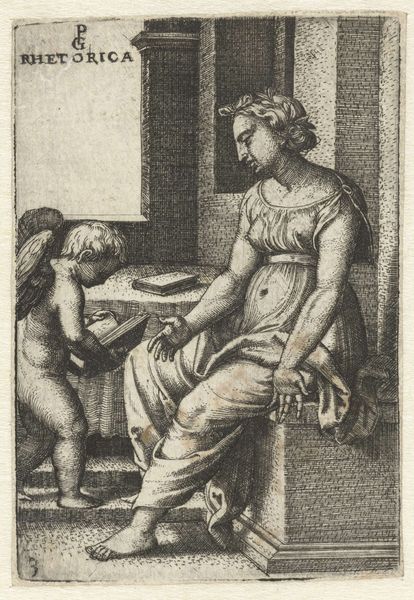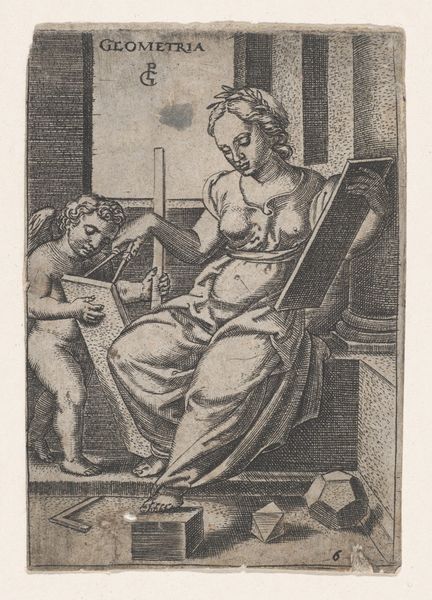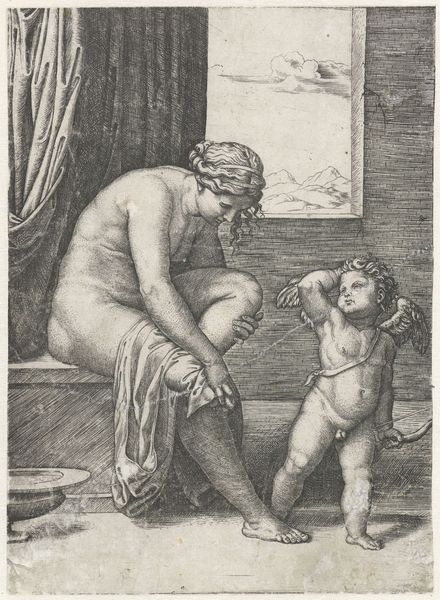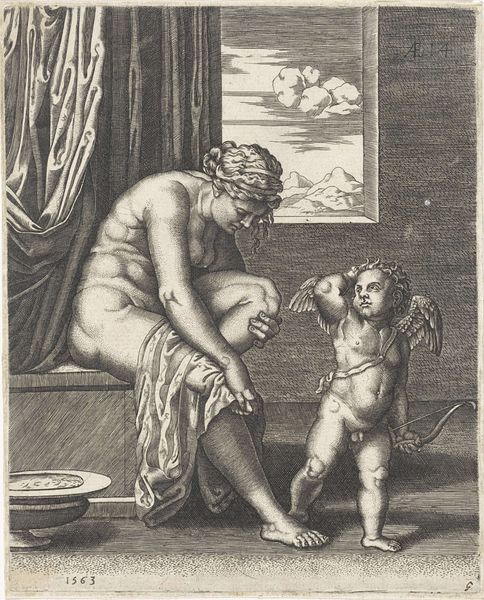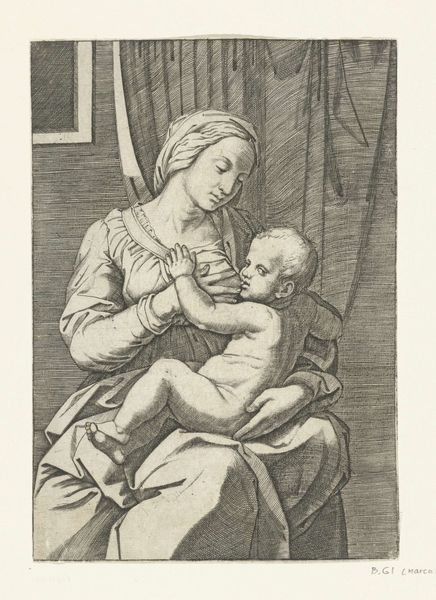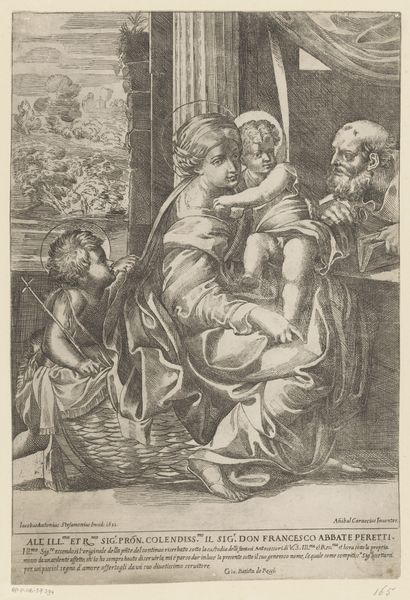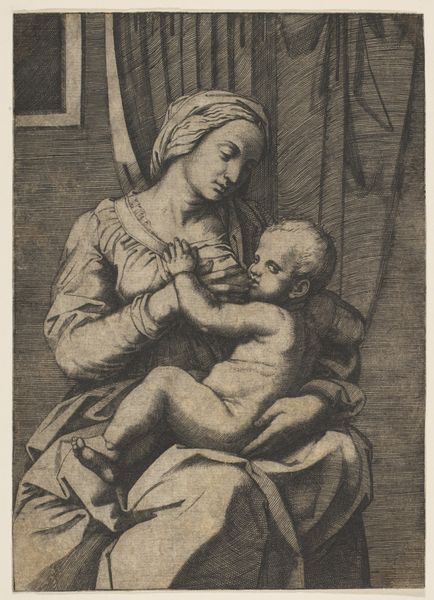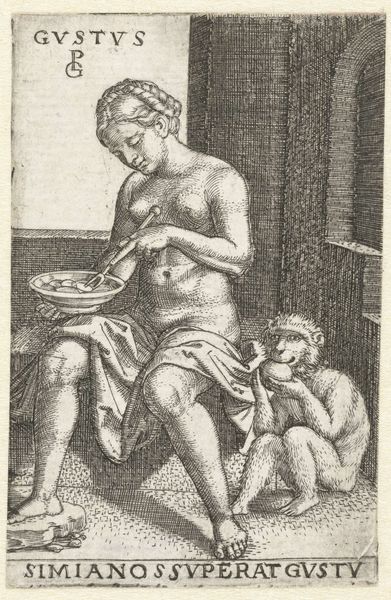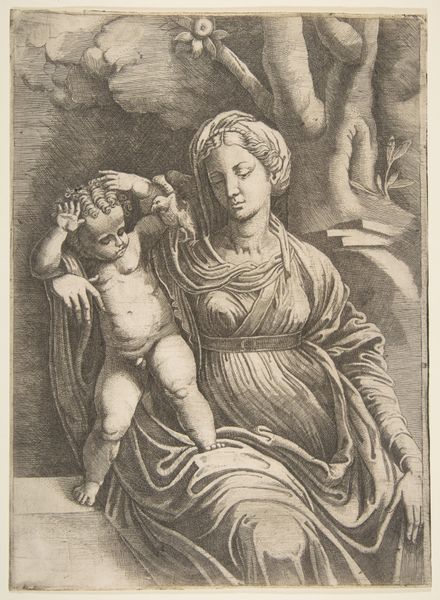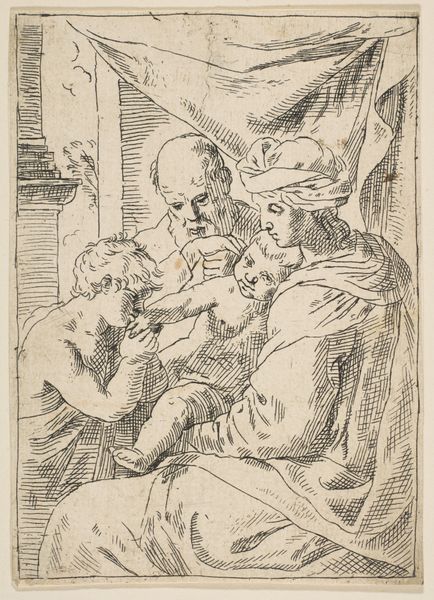
drawing, print, engraving
#
portrait
#
pencil drawn
#
drawing
# print
#
figuration
#
11_renaissance
#
line
#
portrait drawing
#
northern-renaissance
#
engraving
Copyright: National Gallery of Art: CC0 1.0
Editor: This is "Rhetoric," an engraving by Georg Pencz from the Renaissance. There's a female figure, perhaps an allegory, seated next to a cherubic figure engrossed in reading. It feels very... academic and contemplative, yet also a little austere. What do you see in this piece? Curator: Pencz offers us a visualization of Rhetoric at a critical juncture in history, when humanist thought and classical learning were being actively revived and reshaped. But let's look deeper. Consider who had access to rhetoric, to education, during the Renaissance. To whom did these systems of knowledge truly belong? Editor: That’s a great point. It appears this woman is meant to embody the idea of rhetoric, so, essentially, a powerful concept. But you are right: was this power equally accessible to women at the time? Curator: Exactly. The laurel wreath she wears symbolizes achievement and status, yet her downcast gaze hints at a possible conflict. Is this a figure empowered by knowledge or one burdened by the limitations placed upon her gender in accessing and wielding that very power? Editor: So the image may actually reveal underlying tensions within the dominant ideology itself. Curator: Precisely! The child absorbed in study could represent future generations and the hopes placed on them. However, doesn't it also prompt you to ask about *whose* futures were being invested in and *whose* were being overlooked? Whose voices were amplified and whose were deliberately silenced through the control of rhetoric? Editor: That definitely gives me a new lens through which to view this work, and other Renaissance pieces depicting allegories. Curator: Me too. It reminds us that art is never neutral; it's always engaged in a dialogue with the power structures of its time.
Comments
No comments
Be the first to comment and join the conversation on the ultimate creative platform.
